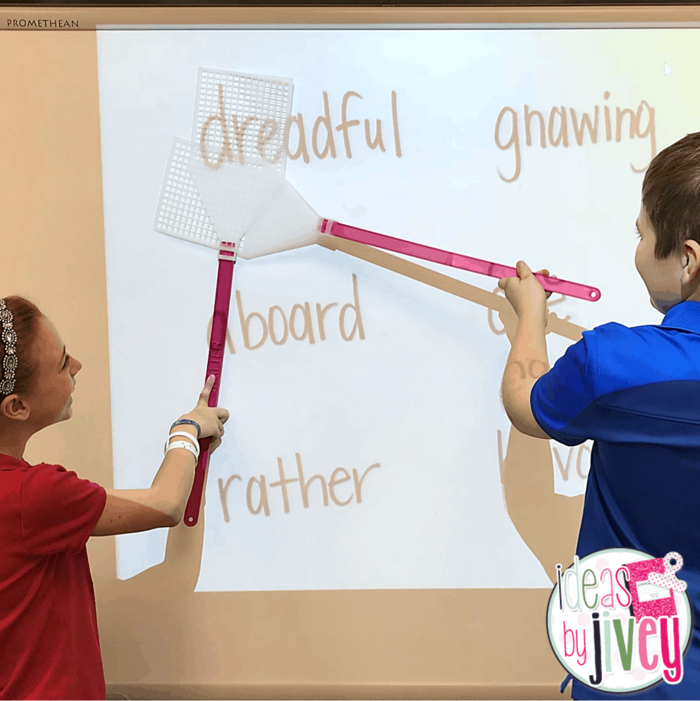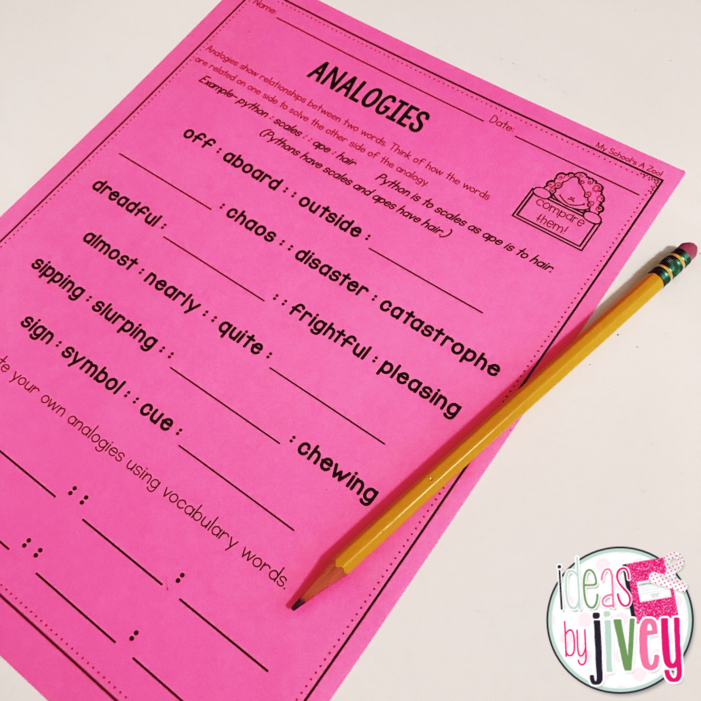Menu
Teachers are aware that understanding vocabulary is crucial to reading comprehension, but we want students to do more than just “know it when they read it.” We hope our students can adopt these words into their repertoire and improve their writing and speaking vocabulary as well.
As I mentioned in this past post filled with research-based information, providing a list of words to look up in the dictionary is NOT sound vocabulary instruction. Multiple exposures to the words in context and their meanings, indirectly as well as intentionally, will help students truly understand how to use the new vocabulary.
I think one of the most important words to note above when thinking about teaching vocabulary is “multiple.” Hearing the word in a mentor text and then talking about it isn’t enough for students to truly “learn” the word. Students must see, hear, and use the new words in many ways in order to really understand it. I shared some ideas of activities to make vocabulary stick in this past post, but I wanted to talk about a few more!
One of the easiest and also most important ways to help students understand vocabulary is to relate those words to synonyms and antonyms that they already know. Students can make their own book of vocabulary words (use a composition notebook or even stapled paper) or a set of word cards, where they list synonyms and antonyms of vocabulary words you are learning in the classroom. This should always be a work in progress so that as they think of other related words (or learn them!), they can add it to their personal resource. This book or set of cards can be referenced when working on writing, like their own personal thesaurus!


For example, with a group of three students, Student A might start by asking, “What would a rabbit gnaw on?” (vocabulary word: gnaw)
Student B could answer, “A rabbit would gnaw on carrots and grass. Some rabbits might gnaw on small pieces of wood, too.”
Student A and C might be nodding their head, but then Student C shakes his head when Student B says rabbits gnaw on wood. Student B calls on Student C to discuss the disagreement. Student C says, “Rabbits don’t gnaw on wood. But beavers do.”
Student B may then argue (and explain/teach!) that he owns a rabbit and his rabbit gnaws on wood because his teeth would keep growing if he didn’t. He could then ask Student C a question using a vocabulary word, and Student C would answer, then ask Student A a question with a vocabulary word.
Your students will enjoy being able to have fairly open discussions, and they will get more practice with and exposure to those vocabulary words!

For example: dreadful : _______ : : frightful : pleasing
Something that is frightful is scary and not pleasing…
…so something that is dreadful is terrible and not _________.
Ask students what word would represent something not dreadful or terrible. They might suggest lovely, happy, or wonderful.
You can pick up the word cards and this analogies page that go along with the book, My School’s a Zoo!
You can also get more vocabulary activities just like this for your favorite mentor texts in my TpT store!
PIN FOR LATER: